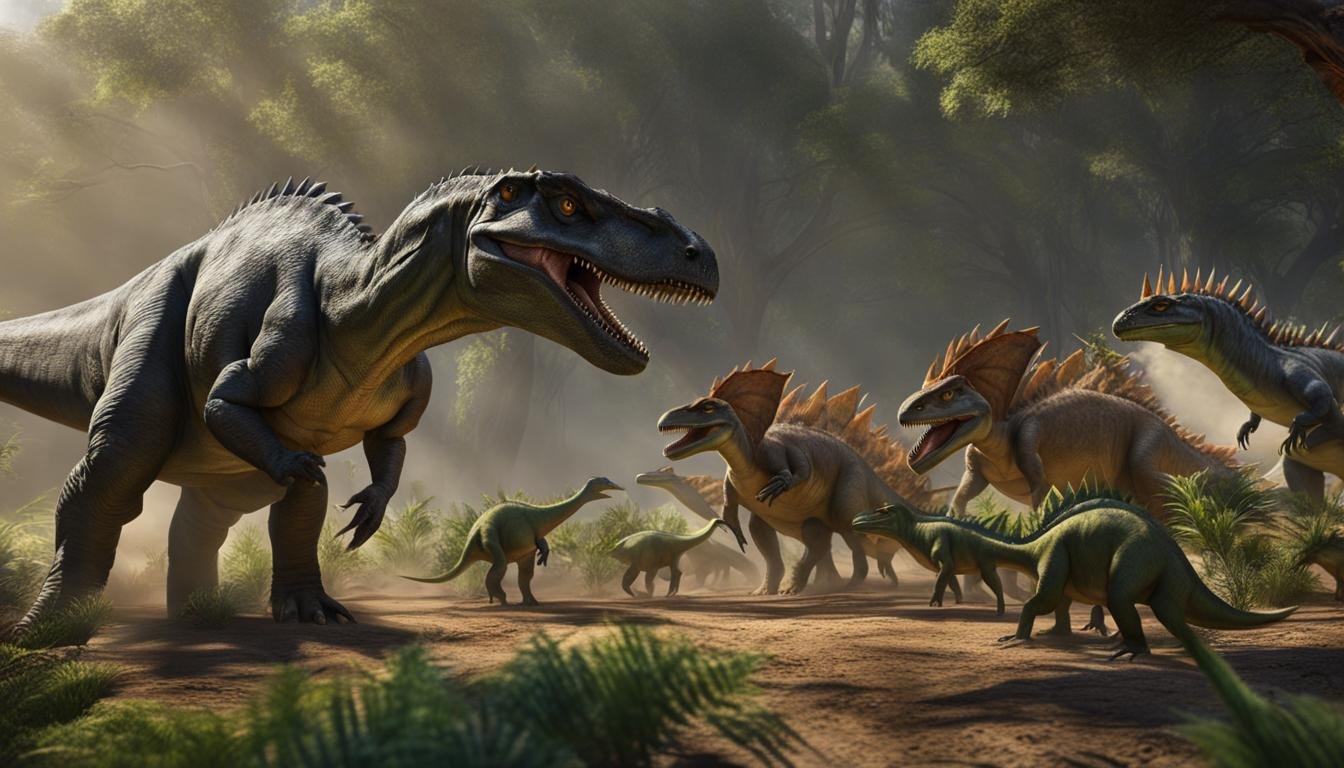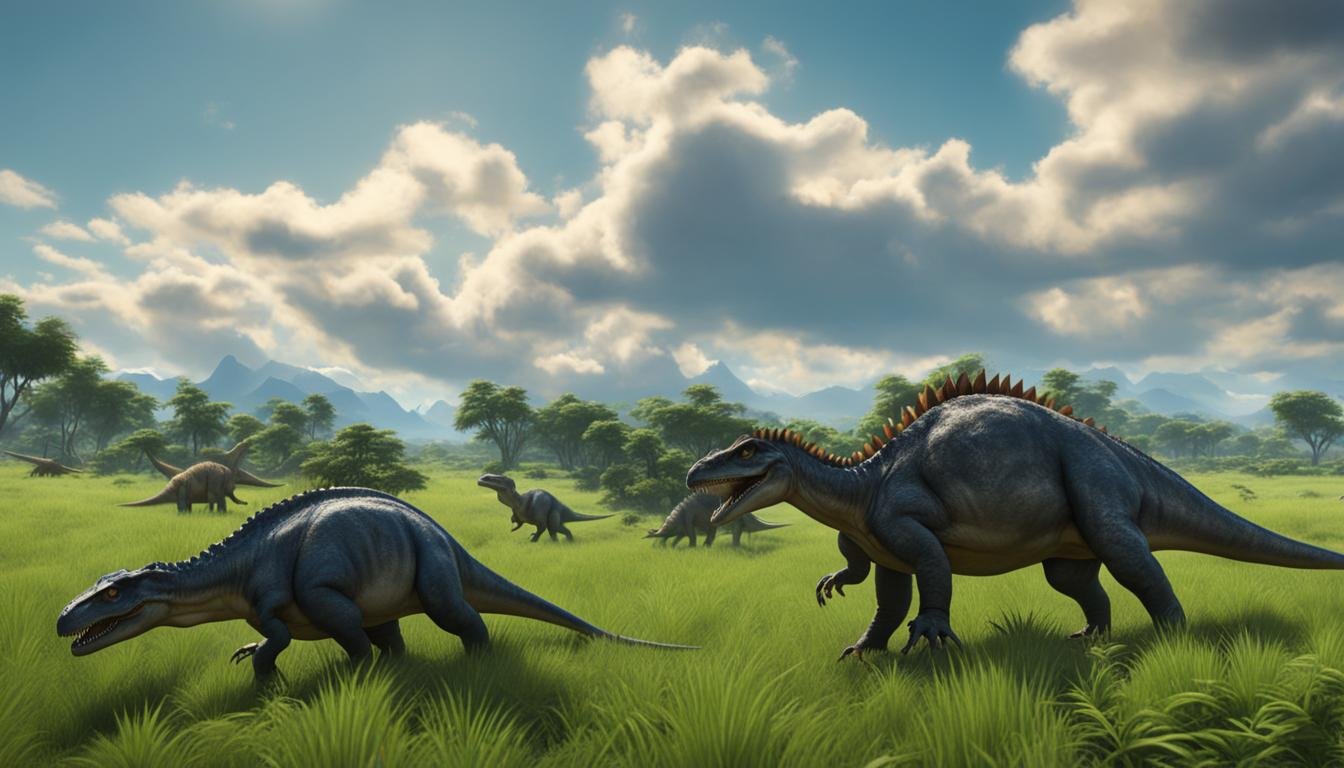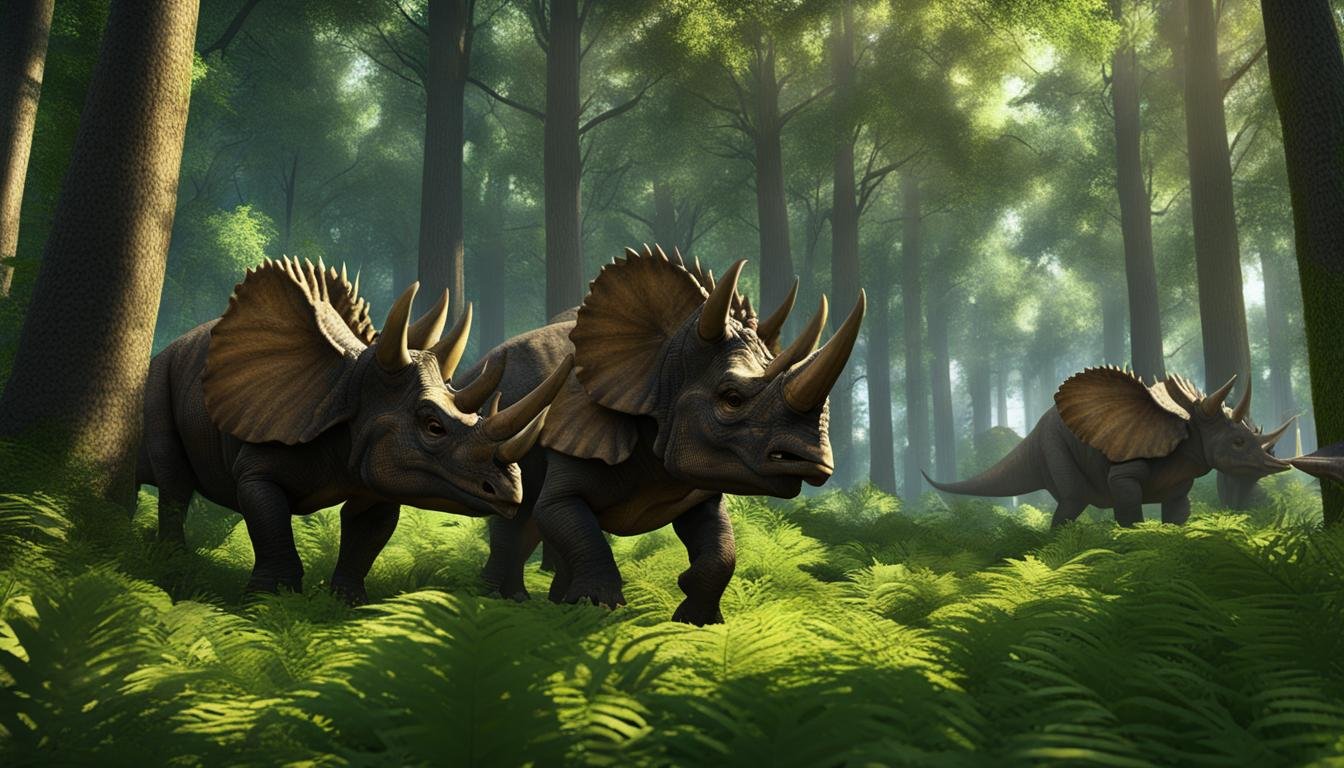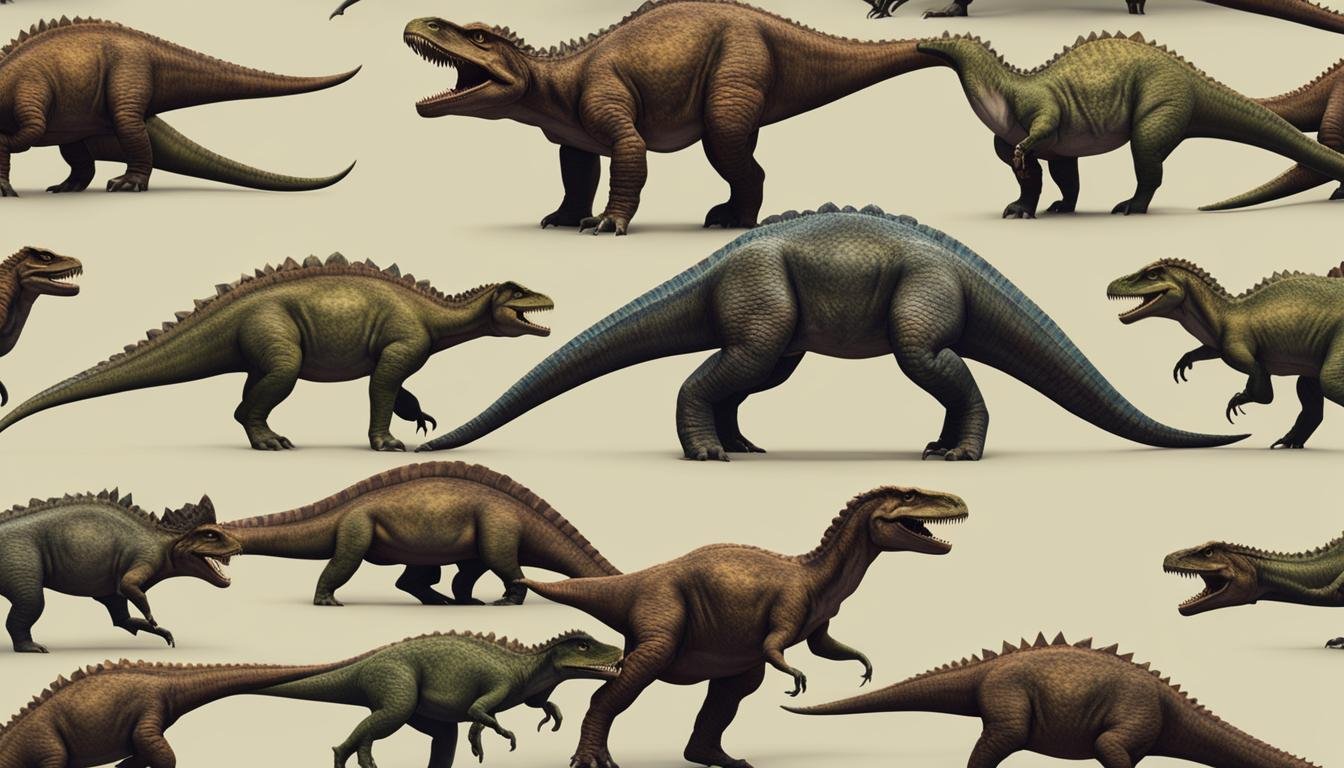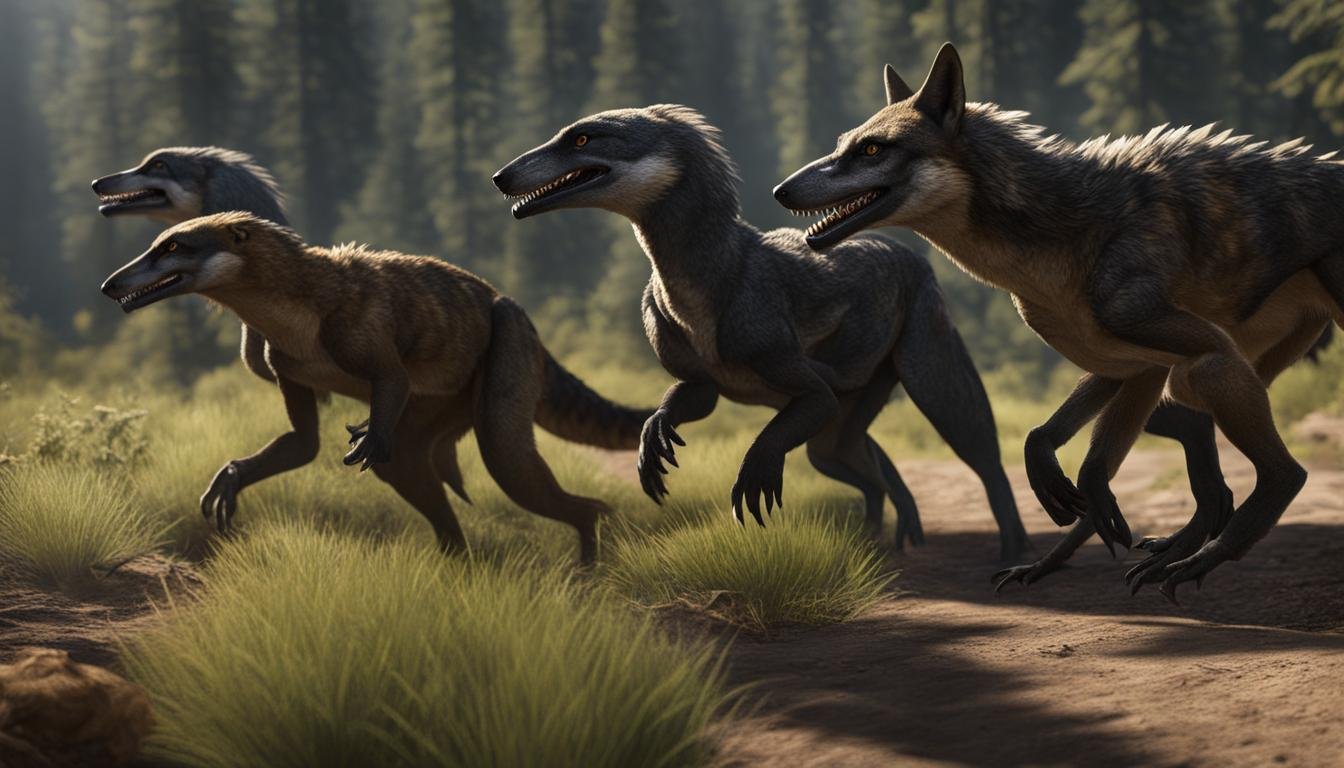Dinosaurs, the magnificent creatures that once roamed the Earth, were not just solitary beings. They displayed remarkable social interaction and cooperative behaviors that contributed to their survival and success. Through the study of paleobiological evidence, we gain valuable insights into the group dynamics and altruistic nature of these ancient creatures.
One of the most fascinating aspects of dinosaur behavior is their gregarious nature. Fossil record analysis has revealed bone beds containing fossils of different ages and species buried together, indicating that dinosaurs lived and moved in groups. This social interaction provided advantages such as increased protection against predators and the ability to engage in cooperative hunting strategies.
Parental care was another manifestation of dinosaur altruism. Cooperative nesting behaviors, such as shared nest guarding and communal brooding, highlight their dedication to ensuring the survival of their offspring. By collectively protecting and caring for the nests, dinosaurs increased the chances of their young ones thriving in a challenging world.
Communication and displays were also essential components of dinosaur social interactions. Visual and vocal cues allowed them to communicate with one another, solidify social bonds, and coordinate group activities. Males often evolved elaborate displays to attract mates, showcasing their fitness and evolutionary advantage.
| Key Takeaway | Detail |
|---|---|
| Gregarious Behavior | Dinosaurs lived in groups, exhibiting gregarious behavior that offered advantages like increased protection and cooperative hunting. |
| Cooperative Nesting and Parental Care | Dinosaurs displayed cooperative nesting behaviors and strong parental care, indicating altruism and a focus on offspring survival. |
| Communication and Displays | Communication methods and display behaviors played significant roles in the social interactions and reproductive strategies of dinosaurs. |
Evolutionary Adaptations and Survival Strategies
The study of dinosaur behavioral ecology has provided insights into their evolutionary adaptations and survival strategies. By analyzing paleobiological evidence, researchers have uncovered the ways in which dinosaurs exhibited cooperative behaviors to increase their chances of survival.
One key adaptation is the presence of cooperative nesting behaviors. Dinosaurs engaged in shared nest guarding and communal brooding, which enhanced the survival rates of their offspring. This cooperative parental care ensured that eggs were protected from potential predators and provided a nurturing environment for the embryos to develop.
Moreover, dinosaurs likely displayed collective foraging behaviors, sharing resources and coordinating their efforts to obtain food. This allowed them to ensure a stable food supply for the entire group, increasing their chances of survival in a competitive environment.
In terms of defensive strategies, dinosaurs exhibited group defense against predators and territorial defense. By working together to fend off threats, individuals within a group could ensure the safety and survival of all members. These protective behaviors were crucial for the long-term survival of dinosaur communities.
| Survival Strategies | Examples |
|---|---|
| Cooperative Nesting | Shared nest guarding, communal brooding |
| Resource Sharing | Collective foraging, coordination in obtaining food |
| Protective Behaviors | Group defense against predators, territorial defense |
Through these evolutionary adaptations and survival strategies, dinosaurs demonstrated their ability to cooperate and thrive in their ancient ecosystems.
Interspecies Cooperation and Altruistic Acts
Altruism and cooperative behaviors in dinosaurs were not limited to interactions within the same species. Interspecies cooperation and altruistic acts have been observed in various dinosaur groups. One notable example is the existence of group hunting strategies, where individuals of different dinosaur species would work together to capture prey, benefiting the entire group. This cooperative hunting behavior allowed for increased success in acquiring food resources and ensured the survival of the group as a whole.
Another fascinating display of altruism in dinosaurs is nest guarding. Fossil evidence has shown instances where dinosaurs of different species joined forces to protect nesting sites and eggs from potential predators. This cooperative nesting behavior played a crucial role in increasing the chances of offspring survival, as the joint effort provided enhanced protection for the vulnerable nests. It is remarkable to consider how dinosaurs recognized the importance of cooperation across species boundaries to ensure the continuation of their lineage.
Kin selection, a mechanism where individuals prioritize the well-being of genetically related individuals, likely played a significant role in promoting these cooperative behaviors. By assisting individuals from other species, dinosaurs may have indirectly ensured the survival of their own genetic lineage. This interplay between kin selection and interspecies altruism highlights the complex social dynamics that existed within dinosaur communities and adds another layer of intrigue to their cooperative behaviors.
| Interspecies Cooperation Behaviors | Examples |
|---|---|
| Group Hunting Strategies | Individuals of different species working together to capture prey |
| Nest Guarding | Joint effort to protect nesting sites and eggs from predators |
| Kin Selection | Assisting individuals from other species to ensure genetic lineage survival |
These instances of interspecies cooperation and altruism in dinosaurs provide compelling evidence of the sophistication and complexity of their social interactions. The ability to recognize and respond to the needs of individuals outside their own species showcases the remarkable intelligence and social intelligence of these ancient creatures. Further research and analysis of these cooperative behaviors will continue to shed light on the intricacies of dinosaur societies and their evolutionary significance.
Social Bonding and Hierarchical Structures
Social bonding and the establishment of hierarchical structures were integral to the functioning of dinosaur communities. Through pack behavior, dinosaurs exhibited coordinated movements, shared resources, and employed cooperative hunting strategies, fostering social cohesion within their groups. This pack behavior facilitated successful hunting, increased survival rates, and enhanced protection against predators.
“By working together, dinosaurs in packs were able to take down larger prey and ensure a stable food supply for the entire group,” says Dr. Jane Reynolds, a paleobiologist specializing in dinosaur behavior. “Cooperative hunting allowed for efficient resource utilization and increased chances of survival in a competitive environment.”
Empathetic behaviors were also observed among dinosaurs, further reinforcing social bonding within the community. These behaviors included providing assistance to injured or sick individuals, indicating a level of care and concern for the well-being of others. Social hierarchies likely existed within dinosaur groups, with dominant individuals assuming leadership roles and exerting influence over group dynamics.
| Social Hierarchy | Herd Cohesion |
|---|---|
| The presence of a social hierarchy ensured clear roles and responsibilities within the pack, promoting efficient decision-making and coordination. | Herd cohesion was crucial for the survival and success of dinosaur groups, enabling effective communication and collective defense against predators. |
| Dominant individuals often led the group during hunting expeditions, guiding the pack towards suitable prey. | By maintaining physical proximity and synchronized movements, dinosaurs in a herd could respond quickly to external threats or changes in their environment. |
| Leadership positions were often attained through displays of strength, agility, and dominance. | Cooperative behaviors, such as vocalizations and visual displays, helped strengthen social bonds and maintain herd cohesion. |
Overall, social bonding and hierarchical structures played crucial roles in the functioning of dinosaur communities. By working together, dinosaurs were able to increase their chances of survival, protect group members from predators, and efficiently utilize available resources.
Conclusion
Through the study of dinosaur altruism and cooperative behaviors, we have gained valuable insights into the social structures and organization of these ancient creatures. The paleobiological evidence supports the existence of gregarious behavior, collective hunting strategies, and cooperative nesting practices in dinosaurs, indicating a level of social complexity and cooperation similar to modern-day animals.
Kin selection and reciprocal altruism are believed to have played crucial roles in promoting cooperative behaviors within dinosaur groups. These driving forces likely contributed to the success and survival of dinosaur communities, allowing them to thrive in their prehistoric environments.
The evolutionary significance of dinosaur altruism and cooperative behaviors cannot be understated. By living and working together, dinosaurs were able to increase their chances of survival, protect their offspring, and ensure a stable food supply for the group. These cooperative behaviors highlight the adaptive nature of dinosaurs and shed light on their remarkable ability to recognize and respond to the needs of others, even those outside their own species.
As further research and analysis of dinosaur social interactions continue, we can expect to uncover even more fascinating behaviors and dynamics of these prehistoric creatures. The study of dinosaur altruism and cooperative behaviors not only deepens our understanding of the past but also provides valuable insights into the social behaviors and organization of animals today.

